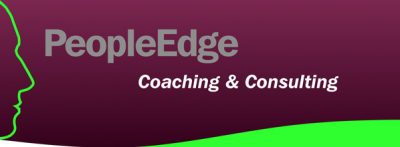
LinkedIn is a strategic tool for personal branding and networking and a well-optimised LinkedIn profile serves as more than just an online résumé.
Personal branding plays a pivotal role in shaping career trajectories and fostering professional opportunities.
It is essential for senior leaders and those wanting to strategically manage their careers to utilise platforms such as LinkedIn.
Let’s look at some essential strategies for creating a captivating LinkedIn profile that resonates with your audience and positions you for success.
Establishing a Brand Identity
Before diving into the specifics of your profile, take a step back to define your distinct value proposition and personal brand. What sets you apart from others in your industry or profession? What are your core strengths, skills and experience? Clarifying these aspects will guide the content and messaging of your profile.
Professional Profile Photo
Your LinkedIn profile photo is often the first impression you make on visitors. Choose a high-quality, professional headshot that fits your unique brand and conveys confidence and approachability.
A Compelling Headline
Your headline is there for a reason—to grab attention and effectively convey your value proposition. Instead of simply restating your job title, replace your title with pertinent keywords and noteworthy accomplishments that demonstrate your expertise and what you deliver. What can people expect of you?
Write a Captivating Summary
Your LinkedIn summary serves as your elevator pitch to prospective connections, hiring managers and recruiters. Craft a compelling narrative that highlights your professional journey, accomplishments and aspirations. Inject personality while maintaining a professional tone.
Highlight Achievements Using Multimedia
Incorporate multimedia elements, such as presentations, videos and links to articles, to effectively exhibit your work, projects or speaking engagements. Visual content adds depth and credibility to your profile.
Strategic Keyword Optimisation
Incorporate relevant keywords throughout your profile to enhance discoverability. Consider the terms recruiters or industry peers might use when looking for someone with your skill set and expertise.
Detailed Experience Section
Provide comprehensive details about your professional experience, including job responsibilities, achievements and measurable outcomes. To effectively showcase your impact, employ action-oriented language and quantify your accomplishments whenever possible.
Education and Certifications
Don’t overlook the importance of listing your educational background and relevant certifications and accreditations. These add credibility to your profile and demonstrate your dedication to continuous learning and professional development.
Engage with Recommendations and Endorsements
Request recommendations from colleagues, mentors, supervisors and clients who can attest to your skills and work ethic. Additionally, endorse the skills of your connections and foster reciprocity by endorsing theirs.
Join Relevant Groups and Communities
Actively participate in LinkedIn groups and communities relevant to your industry or interests. Engage in discussions, share insights and establish yourself as a thought leader in your field.
Publish Thought Leadership Content
Demonstrate your expertise and insights by publishing articles or posts on LinkedIn. Promote your thought leadership by offering insightful commentary, industry trends or personal reflections on leadership-related topics.
Update your Profile Consistently
Keep your profile current with recent accomplishments, projects or career milestones. Regular updates signal to your network that you’re actively engaged and open to new opportunities.
Network Strategically
Utilise LinkedIn’s networking functionalities to establish connections with thought leaders, industry peers and prospective collaborators. Always personalise connection requests and engage in meaningful conversations to nurture professional relationships.
Utilise the Open to Work Feature – but only with Recruiters
If you’re open to new career opportunities, consider utilising LinkedIn’s “Open to Work” feature. This discreetly signals to recruiters that you’re actively seeking opportunities while maintaining confidentiality. Be careful about sharing openly the “Open to Work” logo on your profile, as it can sometimes be seen as “desperate” and ultimately impact your negotiating ability. Opening it only to recruiters will signal to the recruitment community that you’re open to opportunities.
Request and Iterate Feedback
Solicit feedback from trusted colleagues or mentors on your LinkedIn profile. Use their insights to refine and optimise your profile over time, ensuring it aligns with your evolving career goals and personal brand.
Overall, optimising your LinkedIn profile is not merely a one-time task but rather an ongoing process that involves strategic networking and branding. You can improve your online presence, extend your professional networks and gain access to new opportunities by applying these best practices.
Remember, your LinkedIn profile is more than simply a digital résumé; it serves as your personal brand ambassador in the competitive world of professional networking.
Jo Attard Watters is the Managing Principal and Founder of PeopleEdge Coaching & Consulting. Jo is a professional, Master’s degree qualified Executive and Career Management Coach, Consultant, Business Adviser and Academic who works with individuals and organisations to help them “be the best they can be”. With significant experience within both Corporate and Not for Profit sectors, Jo is passionate about seeing her clients succeed in their areas of interest.
